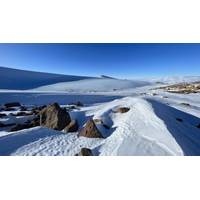
Scientists Discover Six Million Year Old Ice in Antarctica, Offers Unprecedented Window into a Warmer Earth
time, which we hope to conduct between 2026 and 2031,” he said.Additional co-authors on the paper are: Julia Marks Peterson, Christo Buizert and Jenna Epifanio of Oregon State; Valens Hishamunda, Austin Carter and Michael Bender of Princeton; Lindsey Davidge, Eric Steig and Andrew Schauer, University of Washington; Sarah Aarons, Jacob Morgan and Jeff Severinghaus of Scripps Institution of Oceanography at University of California, San Diego; Andrei V. Kurbatov and Douglas Introne of the University of Maine; Yuzhen Yan of Tongji University; and Peter Neff of the University of Minnesota.COLDEX is supported

Writing is Thinking
to flag errors in the text, data, code and references of manuscripts, to guide reviewers toward more-constructive feedback and to polish their prose. Some new websites even offer entire AI-created reviews with one click.”The article quotes Carl Bergstrom, an evolutionary biologist at the University of Washington in Seattle. He says if reviewers start relying on AI so that they can skip most of the process of writing reviews, they risk providing shallow analysis. “Writing is thinking,” says Bergstrom

Schmidt Sciences Fosters AI Research
achieve goals.The 2024 AI2050 Early Career Fellows include:● Sara Beery, assistant professor at the Massachusetts Institute of Technology● Sarah Dean, assistant professor at Cornell University● Tim Dettmers, assistant professor at Carnegie Mellon University● Simon Du, assistant professor at the University of Washington● Gabriele Farina, assistant professor at the Massachusetts Institute of Technology● Anjalie Field, assistant professor at Johns Hopkins University● Marzyeh Ghassemi, associate professor at the Massachusetts Institute of Technology● Yoon Kim, assistant professor at the Massachusetts Institute
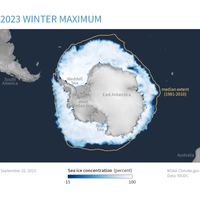
Wind Patterns Help Predict Low Antarctic Sea Ice
the satellite record. The area of sea ice was 2.2 million square kilometers below the average from the satellite record, a loss almost 12 times the size of Washington state.The most recent winter’s peak, recorded in September 2024, was very close to the previous year’s record low.University of Washington researchers show that the all-time record low can be explained by warm Southern Ocean conditions and patterns in the winds that circled Antarctica months earlier, allowing forecasts for sea ice coverage around the South Pole to be generated six or more months in advance.This could support

Utility Serving San Juan Islands Proposes to Harness Tidal Power
, $8 million project to place two turbines on the sea floor off Whidbey Island.The project was terminated in 2014, six months after the Federal Energy Regulatory Commission had given a green light to install the turbines.The PUD had been working with local, state and federal agencies, the University of Washington, research labs and others, but progress stalled under ballooning costs and disagreements with the DOE.When the DOE decided not to fund a full 50% of the project, the PUD announced that it could not move forward without that funding.Surrounded by tidal races 160 miles north of San Juan County
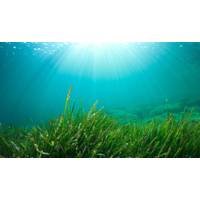
Funding Awarded for Five Projects that Study Ocean Systems in a Changing Climate
sea surface to approximately 200 meters below—affect gyres’ absorption and circulation of carbon dioxide from the North Pacic to the South Atlantic.Animals as Living Bioreactors: The role of animal gut microbiomes in shaping oceanic carbon cycling and export. Led by: Anitra Ingalls (University of Washington)Clues to how the ocean captures and releases carbon may lie in an unexpected place: ocean animal guts. The Bioreactors team will work with scientists in Madagascar and Brazil to better understand how sea creature digestive tracts work as tiny bioreactors that facilitate carbon ux in the
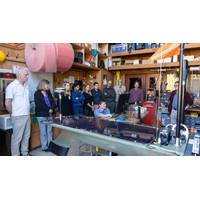
Sonardyne Holds Seabed Deformation Technical Workshop
community in the USA and Canada to share insights, experiences and how its GNSS-A and AZA instruments can be further improved to meet future needs.These included; Ocean Networks Canada, U.S. Geological Survey (USGS), Georgia Institute of Technology, Woods Hole Oceanographic Institution and the University of Washington, as well as our hosts Scripps Institution of Oceanography in California. As well as providing the stunning backdrop for this event, Scripps Institution of Oceanography furnished instruments for the workshop from the large pool of our equipment.GNSS-A and AZA are two independent technologies
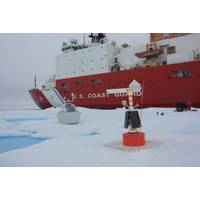
US Coast Guard Cutter Healy, Scientists Deploy Ice Stations
. Science instruments like the WIMBO are individual components of a greater project, the Arctic Mobile Observing System (AMOS), a network of robotic oceanographic instruments making years-long autonomous observations of ocean and sea ice physics.The science party, headed by Dr. Craig Lee of the University of Washington’s Applied Physics Laboratory is comprised of the foremost leaders in the field of oceanographic science.“The ONR AMOS program focuses on developing technologies for making continuous, long-term scientific observations of the Arctic marine environment,” said Lee. &ldquo

Subsea Infrastructure Power Looks at Renewables
geometry, which will include solar panels and a novel direct-drive generator, with trials and rollout targeted for 2024-25.**SeaRAY is configurable from 750W to 25kW. C-Power also has a StingRAY design, for utility-scale power, and TigerRAY, a “next generation SeaRAY”, built for the University of Washington Applied Physics Lab to conduct a U.S. Navy sponsored project to investigate at-sea charging of unmanned underwater vehicles
 December 2025
December 2025





